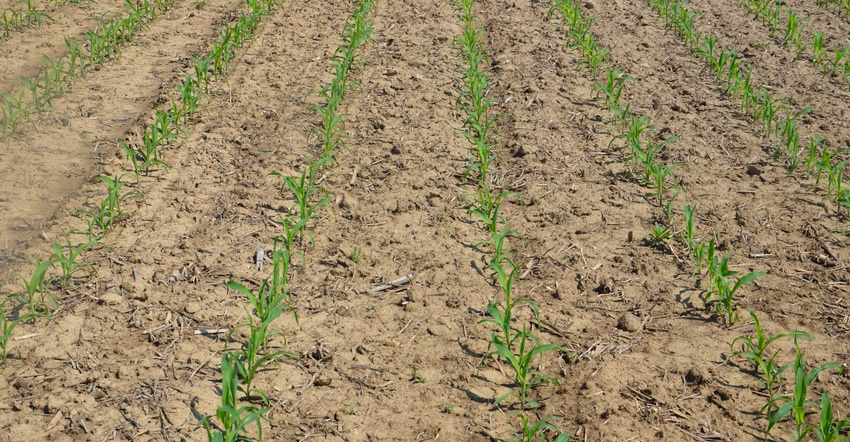April 7, 2020

Who enjoys scouting their fields for weeds or insects? That means dragging yourself out of the truck and into the field, where it might be wet, muddy, hot and humid. It’s not a lot of fun.
While scouting is not the most enjoyable part of farming, it’s time well spent and often pays off in the long run. This is especially true as you’re transitioning to higher-residue systems, such as no-till and strip-till plus cover crops. However, the importance of scouting applies to all cropping systems. Proper scouting is hard work, takes time and needs to involve every field you farm multiple times each season. There are reasons agronomists and ag retailers hire college students to do scouting!
Scouting targets
What should you scout for? Nearly all weeds, including marestail, Palmer amaranth and waterhemp, are easier to terminate when they’re very small. However, proper identification is needed as soon as possible after they emerge. Many weeds grow so fast that even a few days of the right growing conditions may mean ineffective control and a potential yield reduction this year, and more weed control issues in future years.
This requires confidence in your ability to identify weeds at a very young stage. Refer to the Purdue University Corn & Soybean Field Guide, also available as an app for your phone or tablet. Use it as you scout to identify small weed seedlings, as well as diseases, insects and nutrient deficiencies. The Purdue Extension Entomology Pest & Crop newsletter is a weekly resource providing timely information about pests and crops for all of Indiana. You should also be scouting for insects and other pests such as seed corn maggots, wireworms, armyworms, black cutworms, stinkbugs, slugs and voles in no-till and cover crop systems.
Apply IPM principles
While scouting for pests, carefully identify beneficial species such as ground beetles, minute pirate bugs and spiders. Long-term no-till fields often support large spider populations, with webs being more noticeable in the morning after a heavy dew. These beneficial species can be helpful in managing some pests, especially in more mature soil health systems.
Use scouting of beneficial and problem insects alike to determine if economic thresholds have been met to warrant treatment. Understand that crops can sustain damage without yield loss. There is often a lag time before beneficial organisms catch up with a pest outbreak. And if treated, the damage to beneficial insects usually lasts longer.
Use precision technologies to help with your scouting program. If you see an issue while making a field pass, mark that spot so you can keep an eye on it during this growing season and in future years. Taking the time to inspect that location to closely verify what the issue might be could go a long way in preventing a reoccurrence.
Proper scouting, identification and treatment of problematic pests, along with Integrated Pest Management strategies, can help reduce damage from pests and prevent unnecessary pesticide applications, providing a positive return on investment.
Just because the neighbors are spraying doesn’t mean you also need to do so. Scouting and applying IPM principles are important to maintain the gains that have been made in conservation agriculture and to improve all conservation cropping systems.
Bailey is the state conservation agronomist with the Natural Resources Conservation Service. He writes on behalf of the Indiana Conservation Partnership.
You May Also Like




